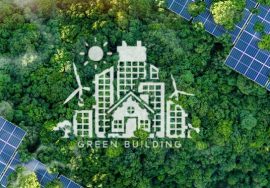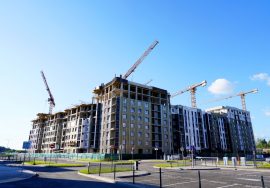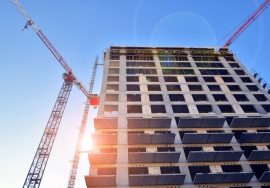Innovative Building Designs: The Future of Architecture

The future of architecture is being shaped by innovative building designs that blend sustainability, technology, and creativity. As urban populations rise and environmental concerns intensify, architects and engineers are pioneering new approaches to meet modern challenges. These innovations not only push the boundaries of design but also contribute to more efficient, eco-friendly, and intelligent structures that redefine the way we live and work.
The Rise of Sustainable Architecture
One of the most significant trends influencing the future of architecture is sustainability. With growing awareness of climate change and the depletion of natural resources, architects are focusing on designs that minimize environmental impact.
Key Elements of Sustainable Building Designs:
- Green Roofs and Living Walls: Buildings are increasingly incorporating green spaces, such as rooftop gardens and living walls, which help insulate the structure, reduce energy consumption, and improve air quality.
- Energy Efficiency: The integration of energy-efficient materials and technologies, such as solar panels, energy-efficient windows, and smart thermostats, is now a common feature in modern buildings.
- Recycled and Renewable Materials: The use of recycled materials like reclaimed wood, as well as renewable resources like bamboo, contributes to the construction of eco-friendly structures that minimize the need for new raw materials.
Technological Advancements in Building Design
The rapid advancement of technology is driving innovation in architectural design. Cutting-edge tools and systems are being implemented to create more efficient, adaptable, and intelligent buildings.
Smart Buildings
Smart buildings leverage advanced technologies like the Internet of Things (IoT) to monitor and optimize energy use, lighting, temperature, and security systems. These structures can adjust their operations based on occupancy and environmental conditions, ensuring comfort while reducing energy consumption.
3D Printing in Construction
3D printing is revolutionizing construction by enabling the creation of complex architectural components with precision and speed. This technology allows for the rapid production of building materials, reducing construction time and labor costs. 3D-printed homes and buildings are already being constructed, demonstrating the potential of this technology to reshape the industry.

Parametric Design
Parametric design is an approach that uses algorithms to create complex, adaptable forms and structures. This allows architects to explore innovative shapes that were previously difficult to achieve with traditional methods. Parametric design tools also enable greater customization, ensuring that each building can be uniquely tailored to its specific environment and purpose.
The Role of Biophilic Design in Modern Architecture
Biophilic design, which emphasizes the connection between humans and nature, is becoming a fundamental aspect of modern architecture. The goal is to create environments that enhance well-being, creativity, and productivity by integrating natural elements into the built environment.
Key Features of Biophilic Design:
- Natural Lighting: Maximizing natural light through strategically placed windows and skylights helps create healthier indoor environments while reducing the need for artificial lighting.
- Indoor-Outdoor Flow: Incorporating outdoor spaces, such as terraces, gardens, and courtyards, into building designs promotes a closer connection with nature.
- Use of Natural Materials: The use of wood, stone, and other organic materials contributes to creating spaces that feel more natural and inviting.
Modular and Prefabricated Building Systems
Modular construction and prefabrication are gaining popularity as efficient and sustainable building methods. These systems involve constructing sections of a building off-site and assembling them on-site, significantly reducing construction time and waste.
Advantages of Modular and Prefabricated Designs:
- Speed: Prefabricated buildings can be constructed more quickly than traditional structures, making them ideal for projects with tight timelines.
- Sustainability: These methods minimize on-site waste and reduce the environmental impact by optimizing material use.
- Flexibility: Modular designs allow for easy expansion and adaptation, ensuring that buildings can evolve with changing needs.
Iconic Examples of Innovative Building Designs
Several architectural masterpieces around the world showcase the future of building design. These structures not only push the boundaries of creativity but also demonstrate the potential of modern technology and sustainability practices.
- The Edge, Amsterdam: Considered the world’s smartest building, The Edge uses smart technology to optimize energy use and create a highly efficient work environment. It is powered by solar energy and uses a sophisticated system to track energy consumption in real time.
- Bosco Verticale, Milan: This residential tower incorporates trees and plants into its design, creating a vertical forest that improves air quality and provides natural insulation.
- One Central Park, Sydney: This building features green walls and a cantilevered heliostat that reflects sunlight into shaded areas, demonstrating the possibilities of sustainable and biophilic design.
External Resources on Innovative Architecture
- ArchDaily – A resource for contemporary architecture projects and trends.
- World Green Building Council – An organization promoting sustainable building practices.
Conclusion
The future of architecture is defined by innovative building designs that prioritize sustainability, technology, and human well-being. From smart buildings and 3D printing to biophilic design and modular construction, these advancements are reshaping the built environment to meet the demands of a rapidly changing world. As architects continue to push the boundaries of what is possible, we can expect to see even more groundbreaking designs that redefine the future of urban living and working.
For more information on modern building designs and architectural services, contact us today!
Read more related articles to enhance your knowledge and make informed decisions
10 Essential Steps in the Building Construction Process
How to Choose the Right Materials for Your Construction Project








